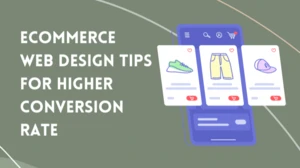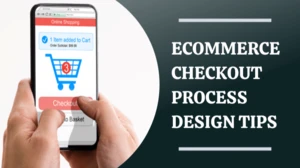7 Reasons to Use a Headless CMS for Ecommerce Business
If you run an online store, showing the products only on your website will not bring all the eyes. To reach more customers, you need to list your products in your mobile app, Instagram shop, Facebook shop and more- with consistent, up-to-date content. Where traditional content management systems (CMSs) often struggle to keep up with this demand, a headless CMS makes it easy, bringing all the flexibility, speed and control you need.
Whether you are an ecommerce brand looking to sell across channels or a company trying to scale globally, a headless CMS is the future-proof solution you should try out to deliver amazing experiences at speed.
In this article, we will explore the key reasons why it is becoming the go-to choice for modern businesses.
7 reasons to use a headless CMS for your website
1. It is more like a future-proof approach
In the growing digital environment, businesses need to be prepared to adopt new technologies, channels and user expectations. In the traditional CMS, if one has to redesign the site or wants to introduce new channels, they often have to rebuild or significantly modify the system.
However, in a headless CMS, developers can build any frontend experience without changing the core content. Otherwise, who would like to take the hassle of rebuilding the CMS every time they innovate on the front end? Right?
2. Omnichannel content selling
Today's audiences can't be confined to just a single platform as they use everything from websites to mobile apps to social media to voice assistants to interact with a brand. So, you must make sure that your content is everywhere your users are.
Omnichannel content delivery refers to distributing the same content across multiple platforms and devices, and that too consistently and simultaneously. While traditional CMSs are designed to serve content only to a particular destination, mostly a website, a headless CMS solves this by decoupling the content and making it accessible to any frontend or device.
3. You can provide personalised user experiences
Speed matters in the digital world. A headless CMS can help you minimise bounce rates, increase conversions, and improve user satisfaction. As it only handles content, it sends the content through the API, making things cleaner and quicker.
Also, a headless setup allows you to build your site ahead of time and store it on multiple servers. So anytime someone visits your site, it loads from the nearest server. Developers can also use modern tools to build a fast-loading site without the extra baggage that comes with traditional platforms.
4. It adds an extra layer of security

One of the biggest advantages of the headless CMS is the security it offers. In the case of traditional CMS, the systems are frequent targets for automated attacks, where the frontend and backend are fully integrated. A headless CMS, on the other hand, completely separates the front end from the back end so you can secure them individually.
Users also get no direct access to the admin interface, as those are hidden behind authentication layers. Another thing is that APIs can be protected through secure tokens, rate limiting, firewalls and role-based access control.
5. It enhances scalability and flexibility
Another advantage of a headless CMS is that it supports scalability and flexibility. Here, when you use a headless CMS, all of your content stays in a central hub and is delivered via APIs to any number of frontend channels. This way, your infrastructure can handle increased load and high traffic volumes across multiple platforms.
Also, you don't need to go for a specific technology stack when using this. Developers can use any modern framework and integrate third-party tools, including analytics, payment gateways, CRMs and more. With this sort of flexibility, it becomes easier to adapt to business needs, add new features and shift to new channels.
6. Better content management workflows
In a headless CMS, the content is stored in a structured and independent way, and each of the pieces, such as titles, descriptions, product specs, and images, is organised into reusable fields or blocks. You don't have to worry about layout or formatting; the content just needs to be put into the predefined field to work.
Later, you can use the same structured content across websites, email campaigns, mobile apps or voice platforms without recreating or reformatting it each time. Also, you can get access to advanced workflow features like role-based permission, scheduled publishing, approval processes and more to work efficiently and minimise errors.
7. Faster time to market

This is another standout advantage of a headless CMS. As a headless CMS separates the backend from the frontend, developers can build the user interface without being tied to the CMS's templating system. Other teams can also manage content independently without working on code, minimising production time.
You can roll out any page, campaign or microsite just by styling and displaying the content on the chosen platform. This reusability and accessibility eventually minimise development cycles.
What is a headless CMS?
A headless CMS is a content management system that separates the frontend from the backend. It is called headless as the 'head', where the content is presented, is removed from the 'body', where the content is managed. This results in unlocking the content while making it easier to manage independently. A headless CMS delivers content through APIs, allowing you to pull and display your content on any device or platform.
Let's say you are a retail brand like Puma and you are working on making your product content appear across your website, app, in-store digital kiosks, social media shops and more. Using a headless ecommerce CMS, you can easily enter and manage your product content in a single centralised system.
Wrapping up
More than a trend, a headless CMS is a strategic move that businesses take to scale while delivering content across several channels. Enjoy the unmatched flexibility, faster performance, and better scalability while delivering truly omnichannel experiences. Remember, it will be a smart investment for your business.



![How to Start an Ecommerce Business in Australia [2023 Guide]](/template/5731a701/images/resource-blog-right-img1.png)





